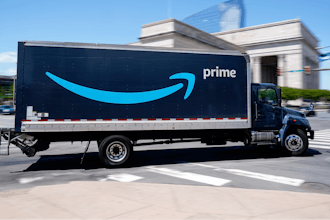
As B2B sellers invest in e-commerce, they are increasingly looking for new ways to grow their revenue. One helpful way is to use this very basic formula:
Sessions x Conversion Rate x Average Order Value = Revenue
Increasing any of these three elements will result in greater revenue. Experienced distributors know that higher conversion rates and greater average order value have a positive impact on revenue. But that other element, sessions, is unique to eCommerce, and it may be one of the easier elements to increase in a short period of time.
Sessions represent the number of active visits to a distributor’s e-commerce site. One session equals the group of interactions or actions a user has on the site during a single visit, which can include browsing site pages, downloading documents, and making transactions.
As our formula demonstrates, more sessions leads to more revenue. Fortunately, there are several ways to attract potential buyers to your site as well as keep them engaged while there. While strategies like SEO and digital marketing can help draw customers to your site, another simple way to grow the number of sessions, as well as session length, is through appealing, informative content.
There’s a reason that the saying “content is king” has stuck around for so long: it’s true. Content gives existing customers and prospects a reason to visit an e-commerce site as well as more incentive to stick around and learn about a distributor’s company, products, services, and more.
Build a better product catalog
If distributors take just one step toward building out their e-commerce content, then it should be building an enriched product catalog. A detailed catalog contains marketing descriptions, product images, feature bullets, and specifications. It should also host supporting documents like data sheets, videos, and installation guides.
Experienced buyers may know the exact SKU or part number that they need and don’t care for all of the bells and whistles. But that cohort is very small, and there are lots of other customers out there who are researching and open to learning. The more information included on a page, the easier it is for customers to find what they’re looking for. Make all this rich content easily accessible on the product detail pages to help buyers find the right product for their application.
It’s also much easier for search engines to understand what the page is about, which helps attract potential customers searching to find what they need (this is search engine optimization in a nutshell). Quality Mill Supply, a distributor of industrial supplies, was able to increase their web sessions 24x in only one year, thanks in large part to an investment in improved content on their e-commerce site’s product detail pages.
Educate buyers
One reason that so many distributors have been hesitant to embrace e-commerce is a desire to “know” their customers. Many pride themselves on the relationships they’ve built with buyers over the years, and online purchasing feels anonymous. It doesn’t have to be, and content is key.
First of all, use content to share your business’ story on your e-commerce site. How long have you been open, who runs the business now, what is your philosophy for operating the business, and who are you serving? Potential customers want to buy from a business they can trust, rather than an anonymous website, so inject some of your business’ personality onto the page.
Then, fall back on those years in business to develop content that shares your product expertise with customers. Create an editorial calendar that lays out the different types of content you plan to create for buyers. Craft multiple blog posts a month that share your product expertise, industry trends, company news, and even new regulations that may affect your customers.
Once that element is running smoothly, build up to more in-depth content like white papers that provide statistics, research, and other fact-based information related to topics that interest your audience. When an eCommerce site functions as a learning hub, it draws in more customers and increases their session time.
Build a video library
Distributors that have mastered blog content and more detailed assets should then think about moving into video. This is where expertise and education can really come together to help customers. Distributors can build libraries of video where they demo new products, explain how to use products, and provide tech tips.
Video is incredibly popular because buyers can access it on demand using their phone or tablet. It’s a portable way to learn while they’re on the job site, without having to call the distributor every time. As an example, Hill & Markes, a wholesale distributor of foodservice disposables and janitorial supplies, does a great job of using video to attract and educate their customers, both on social media channels and on their eCommerce site.
It’s possible to create acceptable quality videos like Hill & Markes with your mobile phone, a lavalier microphone, and a very simple light source. Odds are most distributors already have a knowledgeable employee or two who feels comfortable speaking on camera, and they’ve already made the investment in that employee.
Better content = more sessions
 Frymire
Frymire
The more varieties of content that distributors deploy, the greater the chances of making stronger connections with customers. By enlisting the help of creative and knowledgeable thought leaders within your organization and sharing their wisdom with the world, you’ll soon see your number of sessions rise.
Scott Frymire is the senior vice president of marketing for Unilog






















